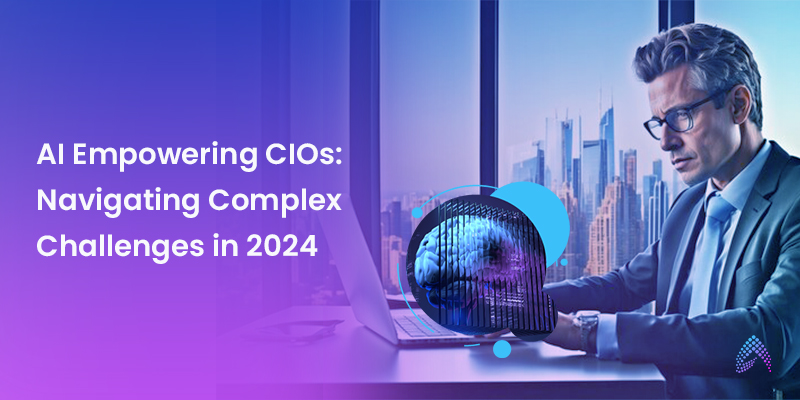
In today’s hyper-competitive landscape, streamlining operations and maximizing efficiency are paramount for CIOs. This is where automation comes in, offering a powerful way to elevate your business. Both RPA and AI technologies benefit businesses, including reduced operational costs and improved accuracy, and they can free up human employees to focus on more strategic tasks.
However, choosing between RPA and AI can be challenging, as each has unique strengths for different business processes.
Let’s delve into the common scenarios where RPA and AI can help businesses reap benefits and become competitive.
1. Accounting and Finance:
Accounting and finance functions require a lot of human intervention, time, and effort. These operations are often prone to errors and lead to inaccuracies and inefficiencies.
RPA excels by taking over routine tasks such as transaction processing, payroll management, and financial report generation. This automation ensures accuracy and speed while freeing up finance professionals to focus on strategic financial analysis and decision-making.
On the other hand, AI automation adds a layer of advanced analytics to the table, capable of predicting cash flow trends, identifying financial discrepancies, and even suggesting budget optimizations.
What fits here: AI is more effective for complex decision-making and predictive analytics, while RPA excels at routine data handling.
2. Customer Support Ticketing:
If your business directly deals with customers, engaging them and personalizing your approach is paramount. Isn’t it?
RPA routes tickets based on keywords, automates responses to frequently asked questions, and pulls up relevant customer histories. This helps speed up services and reduce human error. Due to their limited learning capabilities, RPA methods often need help to personalize conversations.
AI transforms these operations further by analyzing customer queries using natural language processing to understand the context and intention of each user. This enables personalized customer interactions and more effective resolution of complex issues, enhancing customer satisfaction and loyalty. As AI and Gen AI technologies learn and adapt to user patterns, they can easily identify malicious activities and alert your team to take preemptive measures.
What fits here: RPA automates initial tasks and data gathering, while AI personalizes support interactions and offers solutions. AI suits the best for improved customer management and engagement.
3. Inventory Management and Fulfillment:
For retail businesses, inventory is paramount to accelerate sales and engage customers. Over and under-maintenance of inventory leads to a bad experience.
RPA efficiently handles tasks like stock updates, order processing, and tracking shipments, ensuring the systems are always up-to-date with minimal lag.
AI goes a step further by analyzing sales data and market trends to forecast inventory requirements, optimize stock levels, and even adjust orders preemptively to avoid overstocking or stockouts.
For example, AI can help you forecast the most in-demand gifts during Thanksgiving Day and Christmas. So you can maintain optimal inventory. Also, you can track inventory management using AI-powered computer vision technology in real-time.
What fits here: RPA with AI integration. RPA executes pre-defined tasks, while AI provides data-driven insights for smarter inventory management.
4. IT and Operations:
IT and other operations are tedious and human-intensive. RPA helps you automate regular maintenance tasks, system monitoring, and data backups, maintaining system health with minimal downtime.
AI helps you predict potential system failures or security breaches by analyzing historical data and usage patterns. This predictive capability allows IT teams to intervene proactively and prevent issues before they occur.
What fits here: AI adoption helps you automate mundane activities and predict future disruptions, ensuring robust system performance.
5. Reporting:
Reporting isn’t just about compiling numbers, it’s about extracting actionable intelligence from data.
RPA plays a pivotal role by automating data collection and report assembly tasks. This automation can significantly reduce the time it takes to prepare comprehensive reports and free up human resources to focus on more analytical and strategic activities.
AI extends traditional reporting capabilities by adding layers of advanced data analysis. AI contributes to data analysis by utilizing Machine Learning algorithms to uncover complex patterns, trends, and correlations within existing datasets. These insights, often challenging for human analysts to discern, enable companies to make data-driven forecasts and decisions.
What fits here: The integration of these technologies ensures reports are comprehensive and error-free. This enhanced reporting capability allows leadership to quickly adapt to changes, seize opportunities, and mitigate risks, thus steering the organization toward sustained growth and success.
6. Sales/CRM Process:
The role of technology is indispensable in sales and CRM. The more accurate data you have, the more precisely you can increase sales and enhance customer relations.
Robotic Process Automation serves as the steadfast backbone of data management. By automating the entry and updating of customer information, RPA ensures data integrity and frees up sales teams to focus on what they do best.
On the other hand, AI adoption takes the game to an entirely new level. AI organizes information by analyzing patterns in customer behavior, forecasting sales trends, and tailoring interactions to suit individual customer preferences. This capability transforms raw data into a goldmine of insights, helping sales teams identify and anticipate new ways of selling and enhancing customer relations.
What fits here: The fusion of RPA and AI in sales and CRM processes creates a dynamic environment where operational efficiency meets strategic foresight. This proactive approach does more than drive sales; it forges stronger, more personal connections with customers, laying the foundation for sustainable business growth.
7. Quality Control and Compliance:
To ensure your product quality and meet evolving regulatory compliances, RPA ensures consistent adherence to operational checklists and standards while managing compliance documentation rigorously.
AI further enhances this by introducing a layer of predictive analytics and machine learning that are invaluable for operational oversight. Through continuous monitoring, AI technologies identify potential compliance risks before they escalate into more significant issues.
What fits here: AI-powered machine learning strategies ensure that quality assurance is not only reactive but also preemptively managed, aligning with current needs and future regulatory changes.
Conclusion:
By understanding the unique strengths of RPA and AI, you can unlock a new level of automation within your organization. It’s not about RPA vs AI; the most effective approach lies in a strategic combination. Identify the repetitive tasks best suited for rule-based automation and leverage AI’s analytical prowess for complex processes and data-driven insights. This blend will empower your workforce, streamline operations, and propel your business toward a future of intelligent automation.
Learn more about how AI empowers CIOs to navigate their challenges.
Are you embarking on an automation journey and unable to choose between RPA or AI for your business needs?

Author: Ganna V
President & CEO – Growth Markets
Driving strategic growth initiatives, fostering innovation, and leading high-performing teams for impactful business expansion.



